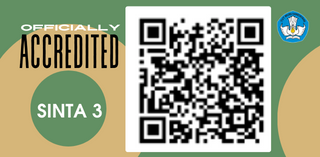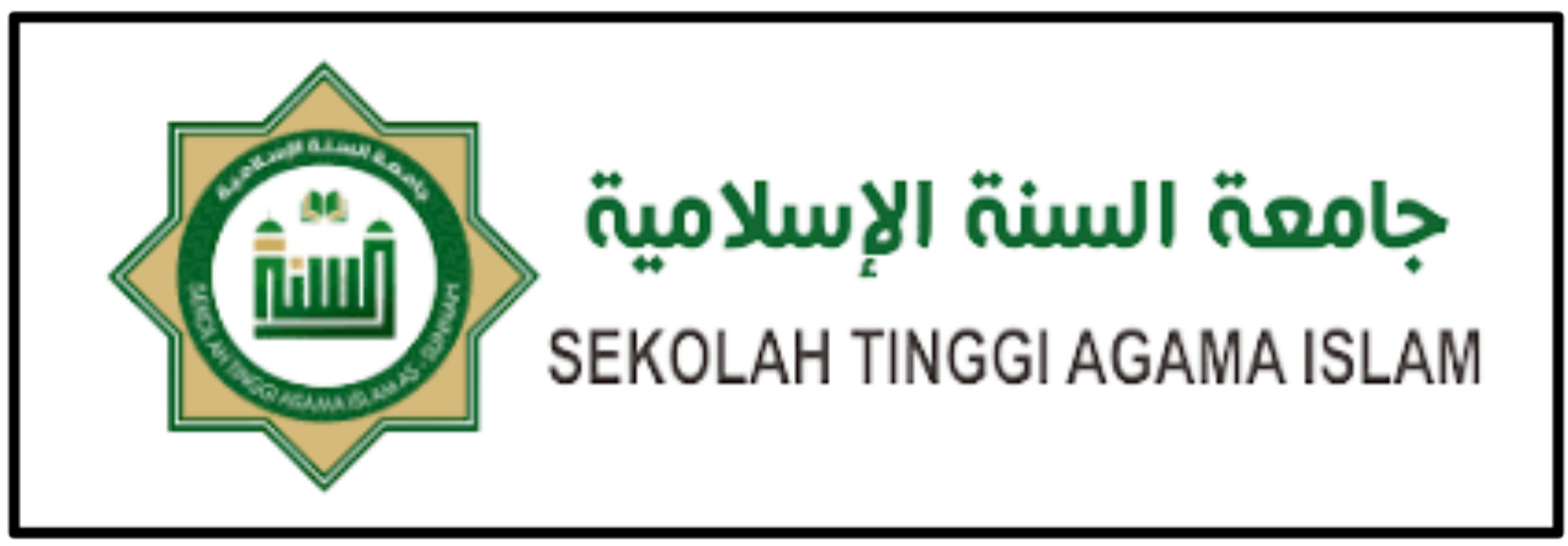Planning and Strategies for Maharah al-Kalam Learning Arabic Language in Madrasah
Abstract
This study aims to describe the planning and strategies for maharah al-kalam learning in madrasahs. This objective aligns with the significant role of speaking skills in language, as language is the primary communication in all languages, including Arabic. The research was conducted using a literature review, which involved analyzing data from articles, books, and other scientific works as the primary sources of information. The data was then analyzed using a qualitative comparative approach, comparing various opinions in these sources and establishing the researcher's position among the existing viewpoints. Based on the analysis, it is evident that there is a lack of established planning for maharah al-kalam learning in madrasahs. Currently, no available plan can serve as a reference to facilitate the implementation of maharah al-kalam learning and enable students to acquire Arabic speaking skills. Based on experts' opinions, recommended strategies for maharah al-kalam learning include the jigsaw technique, small group presentations, and gallery/poster sessions. Techniques such as matching and identifying exercises, pattern drills, and dialogues can be employed. Various media, such as display boards, whiteboards, artificial wall clocks, tours, flow charts, flashcards, and reading machines, can be utilized. It is important to note that this research is limited to descriptive studies. Future researchers can further explore implementing some identified strategies to enhance maharah al-kalam learning.
References
Alfian, Muhammad Evan. “Keterampilan Berbicara Dan Pengajarannya.” Arabia,Jurnal Pendidikan Bahasa Arab 5, no. 1 (2013): 103–121. https://doi.org/10.21043/arabia.v5i1.1409.
Anderson, Lorin W, David R Krathwohl Peter W Airasian, Kathleen A Cruikshank, Richard E Mayer, Paul R Pintrich, James Raths, and Merlin C Wittrock. A Taxonomy for Learning, Teaching, and Assessing. New York, 2001. https://www.uky.edu/~rsand1/china2018/texts/Anderson-Krathwohl - A taxonomy for learning teaching and assessing.pdf.
Aprianto, Aprianto, Mahyudin Ritonga, Yoni Marlius, and Raihan Nusyur. “The Influence of Using Audio-Lingual Method on Students’ Speaking Skill in Madrasah Diniyah Takmiliyah Awwaliyyah.” Izdihar : Journal of Arabic Language Teaching, Linguistics, and Literature 3, no. 2 (2020): 147–160. https://doi.org/10.22219/jiz.v3i2.12514.
Aprianto, Dedi, and Novian Zaini. “The Principles of Language Learning and Teaching in Communication Skill Developments.” VELES Voices of English Language Education Society 3, no. 1 (2019): 45–61. https://doi.org/10.29408/veles.v3i1.1281.
Bygate, Martin. “Quality of Language and Purpose of Task: Patterns of Learners’ Language on Two Oral Communication Tasks.” Language Teaching Research 3, no. 3 (July 1, 1999): 185–214. https://doi.org/10.1177/136216889900300302.
Cholifah, Nur, and Frida Akmalia. “Mahārah Kalām Book: The Implementation at Arabic Course.” ALSUNIYAT: Jurnal Penelitian Bahasa, Sastra, Dan Budaya Arab 4, no. 1 (2021): 1–14. https://doi.org/10.17509/alsuniyat.v4i1.27311.
Dewi, Si Putu, and Ni Komang Purwaningsih. “Speaking Skill Ability in Handling Diabetic Patient in 5 Semester Nursing Students of STIKES Bina Usada Bali.” Jurnal Linguitik Dan Sastra 10, no. 2 (2018): 27–33. https://e-journal.unmas.ac.id/index.php/sphota/article/view/1154.
Dunlosky, John, Katherine A Rawson, Elizabeth J Marsh, Mitchell J Nathan, and Daniel T Willingham. “Improving Students’ Learning With Effective Learning Techniques: Promising Directions From Cognitive and Educational Psychology.” Psychological Science in the Public Interest 14, no. 1 (January 1, 2013): 4–58. https://doi.org/10.1177/1529100612453266.
Elttayef, Ahmed Ibrahim, and Nadhim Obaid Hussein. “Arab Learners ’ Problems in Learning English Language : A Teacher Perspective.” Journal of Literrature, Languages and Linguistics 8, no. 23 (2017): 1–6.
Hady, Yazid. “Pembelajaran Mahārat Al-Kalām Menurut Rusdy Ahmad Thu’aimah Dan Mahmud Kamil Al-Nâqah.” Al Mahāra: Jurnal Pendidikan Bahasa Arab 5, no. 1 (2019): 63–84. https://doi.org/10.14421/almahara.2019.051-04.
Hamer, Katarzyna, Sam McFarland, Barbara Czarnecka, Agnieszka Golińska, Liliana Manrique Cadena, Magdalena Łużniak-Piecha, and Tomasz Jułkowski. “What Is an ‘Ethnic Group’ in Ordinary People’s Eyes? Different Ways of Understanding It Among American, British, Mexican, and Polish Respondents.” Cross-Cultural Research 54, no. 1 (2020): 28–72. https://doi.org/10.1177/1069397118816939.
Hattie, John A C, and Gregory M Donoghue. “Learning Strategies: A Synthesis and Conceptual Model.” Npj Science of Learning 1, no. 1 (2016). https://doi.org/10.1038/npjscilearn.2016.13.
Iqbal, Md. Hafiz, Shamsun Akhter Siddiqie, and Md. Abdul Mazid. “Rethinking Theories of Lesson Plan for Effective Teaching and Learning.” Social Sciences & Humanities Open 4, no. 1 (2021): 100172. https://doi.org/https://doi.org/10.1016/j.ssaho.2021.100172.
Kartika, Tina. “Verbal Communication Culture and Local Wisdom: The Value Civilization of Indonesia Nation.” Lingua Cultura 10, no. 2 (2016): 89–93. https://doi.org/10.21512/lc.v10i2.1424.
Kehing, Katherine Livan, and Melor Md Yunus. “A Systematic Review on Language Learning Strategies for Speaking Skills in a New Learning Environment.” European Journal of Educational Research 10, no. 4 (2021): 2055–65. https://doi.org/10.12973/eu-jer.10.4.2055.
Leong, Lai-Mei, and Seyedeh Masoumeh Ahmadi. “An Analysis of Factors Influencing Learners’ English Speaking Skill.” International Journal of Research in English Education 2, no. 1 (2017): 34–41. https://doi.org/10.18869/acadpub.ijree.2.1.34.
Lin, Yen-Liang. “Vague Language and Interpersonal Communication: An Analysis of Adolescent Intercultural Conversation.” International Journal of Society, Culture & Language 1, no. 2 (2013): 69–81. http://www.ijscl.net/article_2955_1.html.
Lodge, Jason M., Gregor Kennedy, Lori Lockyer, Amael Arguel, and Mariya Pachman. “Understanding Difficulties and Resulting Confusion in Learning: An Integrative Review.” Frontiers in Education 3, no. June (2018): 1–10. https://doi.org/10.3389/feduc.2018.00049.
Lubis, Maria Ulfa, and Zulpina. “تعليم مهارة الكلام بمعهد تأديب الشاكرين الإسلامية (دراسة وصفية تقويمية).” El-Jaudah: Jurnal Pendidikan Bahasa Dan Sastra Arab II, no. 1 (2021): 19–33. https://jurnal.stain-madina.ac.id/index.php/ej/article/view/360/317.
Maulani, Hikmah, and Ahmad Faqih. “Learning Arabic for Beginners: Role-Based Small Group Discussion Cooperative Learning.” Tanwir Arabiyyah: Arabic As Foreign Language Journal 1, no. 2 (2021): 83–92. https://doi.org/10.31869/aflj.v1i2.2900.
Oleksiyenko, Anatoly V, and Vutha Ros. “Human Agency and Legacy-Innovation Tensions in the Internationalization of Higher Education: Re-Orientations Managed by Internationally-Educated Scholars of Central Asia.” International Journal of Educational Development 97 (2023): 102716. https://doi.org/https://doi.org/10.1016/j.ijedudev.2022.102716.
Purba, Norita. “The Role of Psycholinguistics in Language Learning and Teaching.” Tell : Teaching of English Language and Literature Journal 6, no. 1 (2018): 47–54. https://doi.org/10.30651/tell.v6i1.2077.
Purwanti, Sri Erma, Fauzia Sudra, and Suldania Pratiwi. “Students’ Learning Strategies in Developing Speaking Skill At English Study Program Islamic University of Indragiri.” Jsi 2, no. 2 (2021): 98–109. https://doi.org/10.32520/jsi.v2i2.1560.
Putri, Annindita Hartono, Fira Eka Permatasari, Athiyah Laila Hijriyah, and Lailatul Mauludiyah. “Arabic Quizzes Game to Improve Arabic Vocabulary Annindita.” Tanwir Arabiyyah: Arabic as Foreign Language Journal 1, no. 1 (2021): 47–54. https://doi.org/10.31869/aflj.v1i1.2484.
Qureshi, Mustapha, Dinnah Mahdiyyah, Yassine Mohamed, and Mounika Ardchir. “Scale For Measuring Arabic Speaking Skills In Early Children’s Education.” Journal International of Lingua and Technology 1, no. 2 (2022): 114–130. https://doi.org/10.55849/jiltech.v1i2.81.
Ramdhani, Abdullah, Muhammad Ali Ramdhani, and Abdusy Syakur Amin. “Writing a Literature Review Research Paper: A Step-by-Step Approach.” International Journal of Basic and Applied Science 03, no. 01 (2014): 47–56.
Ritonga, Mahyudin, Asrina, Rizka Widayanti, Fitri Alrasi, Julhadi, and Syaflin Halim. “Analysis of Arabic Language Learning at Higher Education Institutions with Multi-Religion Students.” Universal Journal of Educational Research 8, no. 9 (2020): 4333–4339. https://doi.org/10.13189/ujer.2020.080960.
Ritonga, Mahyudin, Suci Ramadhanti Febriani, Martin Kustati, Ehsan Khaef, Apri Wardana Ritonga, and Renti Yasmar. “Duolingo: An Arabic Speaking Skills’ Learning Platform for Andragogy Education.” Education Research International 2022 (2022): 1–9. https://doi.org/10.1155/2022/7090752.
Ritonga, Mahyudin, Sri Wahyuni, and Hendri Novigator. “The Future of Arabic Language Learning for Non-Muslims as an Actualization of Wasathiyah Islam in Indonesia.” F1000Research 12 (2023): 27. https://doi.org/10.12688/f1000research.125760.1.
Schmidt, Shelly J. “Distracted Learning: Big Problem and Golden Opportunity.” Journal of Food Science Education 19, no. 4 (2020): 278–91. https://doi.org/10.1111/1541-4329.12206.
Susiawati, Iis, and Dadan Mardani. “Learning Arabic Language Skills for Adults (Jack C. Richard Thought Review).” Alibbaa’: Jurnal Pendidikan … 3, no. 2 (2022): 103–123. http://ejournal.iainmadura.ac.id/index.php/alibbaa/article/view/5924.
Wahyuni, Sri, Mahyudin Ritonga, and Windy Afrianti. “Systematic Review of Learning Method for Teaching Arabic Listening and Speaking Skills.” Al-Hayat: Journal of Islamic Education (AJIE) 7, no. 1 (2023): 30–41. https://doi.org/10.35723/ajie.v7i1.321.
Widodo, Joko, and Muhammad Nanang Qosim. “Penilaian Kinerja Pada Pembelajaran Maharah Al-Kalam Level 1 Di Kursus Bahasa Arab Al-Arobiya Surakarta.” Uktub: Journal of Arabic Studies 1, no. 2 (2021): 84. https://doi.org/10.32678/uktub.v1i2.5814.
Wu, Shaoqun, Ian H. Witten, Arthur Edwards, David M. Nichols, and Raúl Aquino. “A Digital Library of Language Learning Exercises.” IJET International Journal of Emerging Technologies in Learning 2, no. 1 (2007): 1–7. https://online-journals.org/index.php/i-jet/article/view/15/23.
Copyright (c) 2023 Bambang Bambang, Ilham Tanjung, Dahlan Hatoguan Ritonga, Lilit Pardomuan Hasibuan, Abdul Hakim Pohan

This work is licensed under a Creative Commons Attribution 4.0 International License.








.png)












.png)

